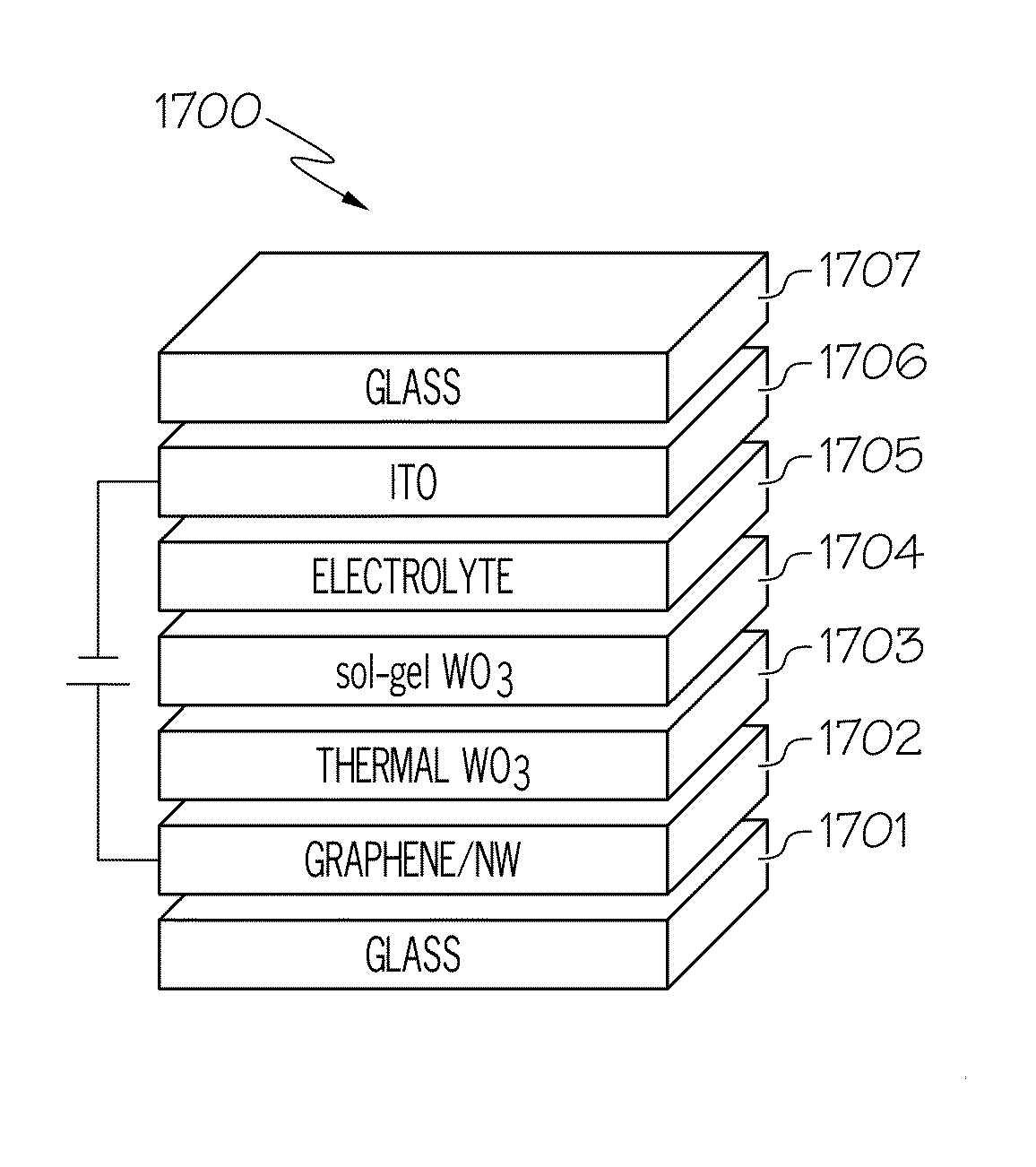Graphene/metal nanowire hybrid transparent conductive films
a technology of graphene and metal nanowires, applied in the field of transparent conductive films, can solve the problems of brittle structure of ito, poor compatibility with organic materials, and increasing cost of ito, and achieve the effect of satisfying all the requirements of emerging device applications
- Summary
- Abstract
- Description
- Claims
- Application Information
AI Technical Summary
Benefits of technology
Problems solved by technology
Method used
Image
Examples
Embodiment Construction
[0066]Today, indium tin oxide (ITO) is the main material used for transparent conductive films (TCFs). However, the brittle ceramic structure, poor compatibility with organic materials and the growing cost of indium seriously limit the use of ITO in TCFs, especially in emerging flexible electronics and large-area applications. Therefore, several other materials including new oxide films, conductive polymers, carbon nanotubes (CNTs), metal nanostructures and graphene-based nanostructures have been investigated as alternatives to ITO. Among these materials, one-dimensional (1D) CNTs and metal nanowires (NWs) and 2D graphene-based films are particularly interesting due to their good TCF characteristics, such as low sheet resistance (Rs) and high optical transmittance (T), which are comparable to / or better than that of ITO films. However, their use in a wide range of TCF-using devices is restricted by several specific drawbacks. Metal NW and CNT films are characterized by open spaces be...
PUM
| Property | Measurement | Unit |
|---|---|---|
| thickness | aaaaa | aaaaa |
| thickness | aaaaa | aaaaa |
| concentrations | aaaaa | aaaaa |
Abstract
Description
Claims
Application Information
 Login to View More
Login to View More - R&D
- Intellectual Property
- Life Sciences
- Materials
- Tech Scout
- Unparalleled Data Quality
- Higher Quality Content
- 60% Fewer Hallucinations
Browse by: Latest US Patents, China's latest patents, Technical Efficacy Thesaurus, Application Domain, Technology Topic, Popular Technical Reports.
© 2025 PatSnap. All rights reserved.Legal|Privacy policy|Modern Slavery Act Transparency Statement|Sitemap|About US| Contact US: help@patsnap.com



